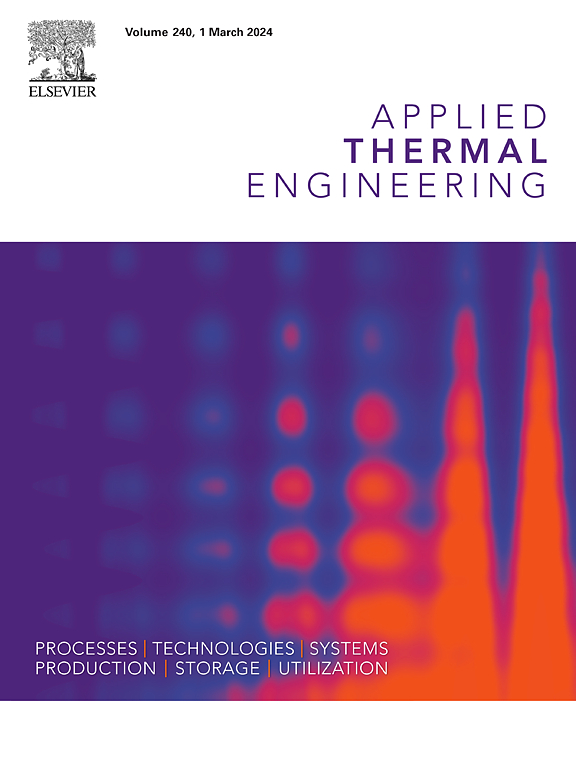Dynamic characteristics of packed bed latent heat thermal storage tank to smooth solar energy fluctuations
IF 6.1
2区 工程技术
Q2 ENERGY & FUELS
引用次数: 0
Abstract
Thermal energy storage utilizing phase change materials (PCMs) is a crucial technology for solar energy applications. However, there is a lack of knowledge regarding investigating the influence of the solar flux intensity fluctuations during the day on the performance of water/PCM-packed bed thermocline storage systems, which typically necessitate a stable heat load output. In this context, the study examines two distinct flux intensities in separate regions of Egypt: Qena and Sinai. Subsequently, the research delves into the effects of the melting temperature of PCMs and the discharge flow rate on the performance under actual solar conditions, employing the flux data from Sinai. A comprehensive two-dimensional unsteady mathematical model is developed to effectively couple the transient temperatures of water and PCM spherical capsules within the bed and perform energy and exergy analyses. The results indicated that the system performance using Sinai’s flux surpasses Qena’s flux in terms of both charging duration and discharging capacity. Besides, Sinai’s flux facilitates a more rapid charging of the storage tank than Qena’s, demonstrating a 28 % enhancement in the charging rate and a 4 % improvement in charging power. The PCM with a lower melting temperature demonstrates the highest charging efficiency. In addition, the tank system employing RT55 has an exergy efficiency of 73.3 %, while the tank system utilizing RT65 attains an efficiency of 74.77 %. The exergy efficiency of the packed bed tank and the whole system demonstrates an inverse correlation with the discharge flow rate. A threefold increase in the discharge flow rate, from 0.3 to 0.9 m3/hr, shows a 5.3 % reduction in exergy efficiency for the tank and the whole system.
求助全文
约1分钟内获得全文
求助全文
来源期刊

Applied Thermal Engineering
工程技术-工程:机械
CiteScore
11.30
自引率
15.60%
发文量
1474
审稿时长
57 days
期刊介绍:
Applied Thermal Engineering disseminates novel research related to the design, development and demonstration of components, devices, equipment, technologies and systems involving thermal processes for the production, storage, utilization and conservation of energy, with a focus on engineering application.
The journal publishes high-quality and high-impact Original Research Articles, Review Articles, Short Communications and Letters to the Editor on cutting-edge innovations in research, and recent advances or issues of interest to the thermal engineering community.
 求助内容:
求助内容: 应助结果提醒方式:
应助结果提醒方式:


